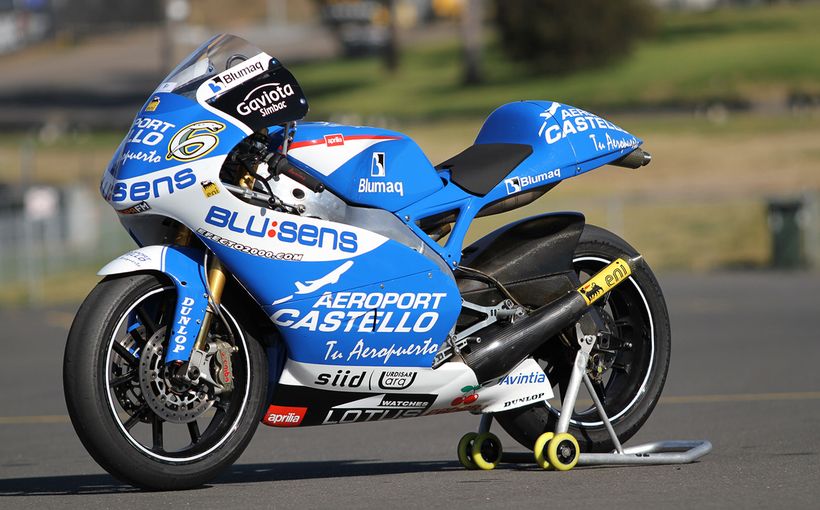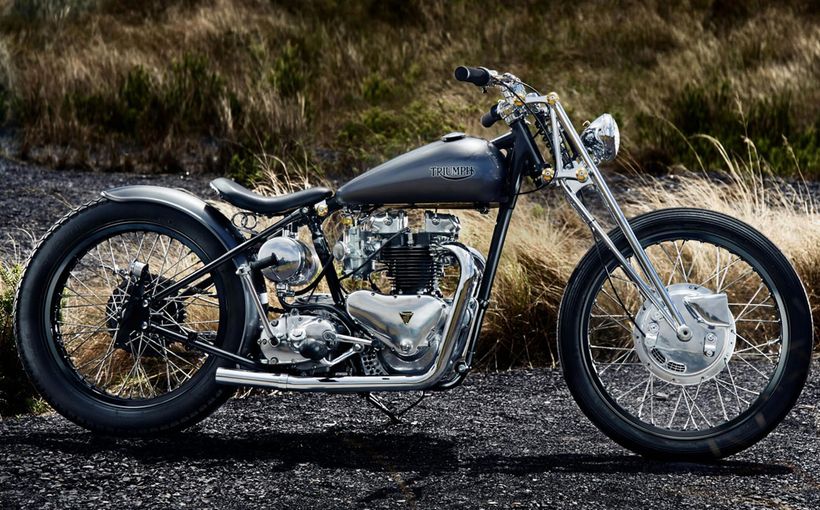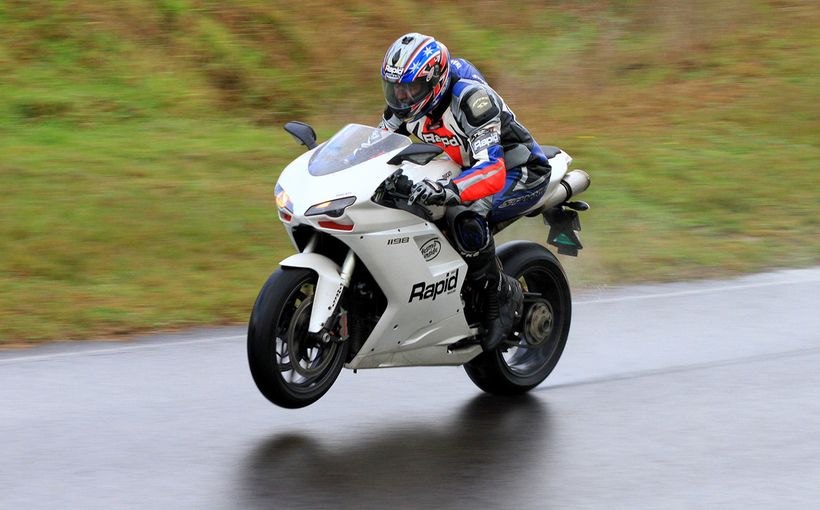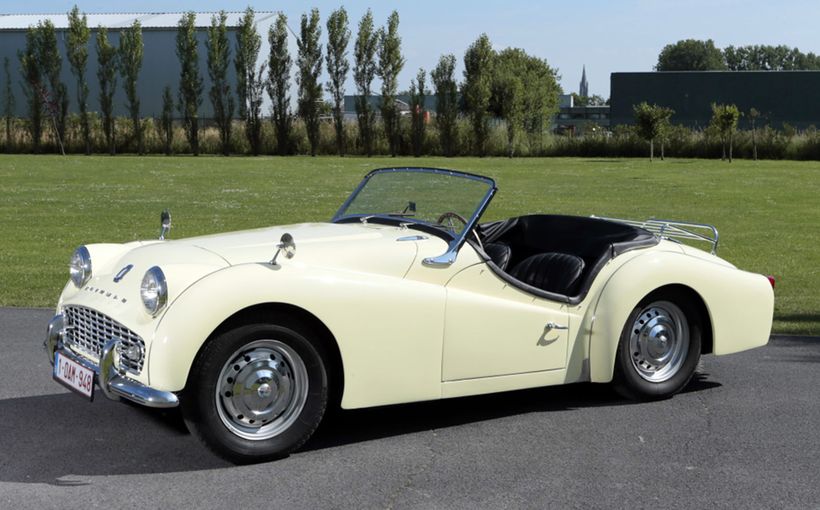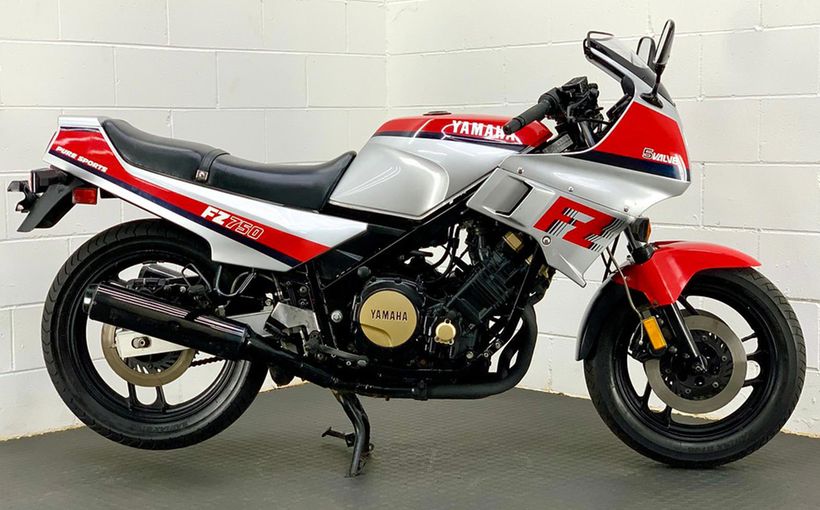Triumph Speed Twin: Power and the Glory

It was a question of ‘when’ not ‘if’ Triumph would revive its Speed Twin nameplate, and the marketing people must’ve been itching to pull the trigger. Sure, doing it to coincide with the iconic bike’s 80th anniversary makes for a nice tie-in but, more importantly, the modern-day machine had to be a worthy successor. There’s a lot at stake here, and the significance of reviving the Speed Twin name carries similar weight to the launch of the T120 Bonneville in 2016./p>
When it came to the design brief of the current Bonnie, the man who owns the company, John Bloor, only needed four short words of stern advice – “Don’t f*ck it up” – and Triumph achieved quite the opposite. It’s amusing to imagine what Mr Bloor’s words of wisdom might have been this time, but he was undoubtedly more relaxed given every example of the latest Modern Classics boasts a considerable hike in performance, handling, fit and finish, price and character over their lacklustre predecessors.
The time had come to pull that Speed Twin trigger and, dear readers and fellow enthusiasts, what we have here is a worthy successor.

MORE LEAN BEEF
The Speed Twin essentially picks up where the smaller but conceptually similar Street Twin leaves off as a performance-oriented, neo-retro version of the Bonneville T120. Or a comfortable, upright Thruxton. But don’t for a minute think it’s a parts-bin special.
Powering it is the familiar 1200cc parallel twin in ‘High-Power’ Thruxton tune, which means 72kW (97hp) at 6750rpm and 112Nm at 4950rpm with more than 100Nm on tap at 2500rpm, well up from the Street Twin.
In fact, going from $14,100 for the recently updated Street Twin to $18,000 (plus on-road costs) for the Speed Twin buys you almost 50 per cent more power and 40 per cent more torque. For $4000, that pretty much makes it a no-brainer.
But if your head and heart say Thruxton then your arms, shoulders, legs and butt will scream Bonneville after only a few hours riding the sexy cafe racer, and that’s also where the Speed Twin comes in, offering the best of both worlds. It’s $700 cheaper than the Thruxton too.
But beyond the obvious comfort appeal and more modern demeanour, the Speed Twin has several key differences from the three-year- old Thruxton, and they’re worthy of your attention. A lighter crankshaft, a new magnesium cam cover and a revised clutch assembly contribute to a 2.5kg saving in the engine alone.

The eyebrow raiser, however, is a dry weight of 196kg (or about 207kg with a full 14.5-litre tank). That makes the Speed Twin 10kg lighter than the Thruxton (7kg less than Thruxton R) and 2kg lighter than the smaller Street Twin, which proves extra performance doesn’t immediately equal extra weight.
Jenny Craig worked her liposuction from the cast-alloy wheels, which are 2kg lighter than the Street Triple naked bike’s. She also added aluminium downtubes to the frame and a smaller battery.
Is it worth comparing a T120 Bonneville in all this? Not really. But if you are asking, the T120’s outputs are down, weight is up and it isn’t intended to be anywhere near as athletic.
Riding the Speed Twin is just like the Street Twin, which means it’s engaging, entertaining and confidence-inspiring, but with a helluva lot more accessible grunt. It’s simply easy.
The Speed Twin’s accessibility part lies in its fat and flat torque curve, a goal which engineers worked extremely hard to deliver, according to Triumph Australia technical manager Cliff Stovall.

“A low-rev, high-torque delivery is a characteristic engineers really concentrated on achieving,” he said. This was done via a lighter crankshaft with more inertia and higher compression to give it similar torque to the Bobber with the power of the Thruxton. The fact that there’s more than 100Nm on tap from 2500rpm speaks for itself. The distinctive beefy burble (thanks to the now-familiar 270-degree firing interval) does the rest of the talking.
Unlike the Street Twin, gear changes in preparation for overtaking are pretty much unnecessary on the Speed Twin – that fat torque wedge comes on strong, and even with the standard pipes, boy does it sound and feel good.
The other point of accessibility is the Speed Twin’s dual personality. On one hand, it welcomes and encourages you to let it rip through your favourite set of twists. On the other, its Bonneville DNA means it’s also adept at sitting back and cruising without a whisper of temptation. That’s something few bikes actually achieve and a benefit that shouldn’t be overlooked with an increasing number of speed cameras watching your every move. If you’re leaning towards a conventional, performance-oriented naked bike such as the Street Triple RS or Speed Triple RS, that’s worth considering. Unless you’re planning on doing track days, don’t be quick to dismiss the Speed Twin. But it ain’t no slug either – it punches hard all the way to its 6750rpm peak output before you grab another gear.

TAKING IT TO THE STREET
The Speed Twin shares its non-adjustable KYB suspension (preload adjustment only at the rear) with the Street Twin and Street Cup, which risks robbing it of some showroom sheen alongside the Thruxton R’s golden glow. That’s where a higher-spec R version, with fully adjustable Showa and Ohlins suspension, makes sense, but Triumph Australia says it knows nothing of a Speed Twin R being in the pipeline.
But when you ride the Speed Twin, there’s no sense you’re being robbed. Though obviously not as scalpel-sharp as the naked bikes, the Speed Twin demonstrates a strong sense of cohesive engineering as a precise, entertaining and forgiving bike for riders of all abilities. It feels great in the real world, with plenty of feedback, compliance and stability whatever the quality of the bitumen. It gives no reason to rattle your confidence when the going gets rough and bumpy. In fact, at no time were we conscious of its suspension, which is always confirmation of a job well done.
The neo-retro machine is fun and easy to bank over through the bends too helped by keen flickability, excellent cornering clearance and strong, progressive brakes. Complementing this are Pirelli’s performance-oriented Rosso Corsa III tyres on 17-inch cast-alloy wheels at both ends (Street Twin and Bonneville have 18-inch fronts) as well as three riding modes (Rain, Road and Sport), which soften or sharpen throttle response as well as the threshold of the switchable traction control.

In the city, tight spaces and stop-start crawls, the Speed Twin is nimble, weightneutral and its steering lock (though not quite a generous as the Street Twin’s) provides a nice, tight turning circle. The clutch is lovely and light thanks to the slip-assist function, and the six-speed gearbox is slick, with top gear being a true overdrive for relaxed cruising.
The ergonomics are accessible for riders of all stature, and getting a foot to the ground is easy for vertically challenged folk thanks to the supportive 807mm-high seat (47mm higher than Street Twin), which is more than comfortable enough for a good day’s ride.
Some journos at the launch mentioned minor discomfort at the seat-tank junction or where their knees met the bottom of the tank, but we experienced none of that. As for range, its 14.5L tank will get you around 300km with a restrained throttle.
What will undoubtedly win over many buyers is the bike’s aggressive stance, its visual simplicity and Triumph’s sharp attention to detail. It looks much more expensive than its rivals and certainly more than its $18,000 asking price. Need further proof? Those forward-slant tank stripes are hand-painted.
The Speed Twin distinguishes itself from its 1200cc siblings with lots of neat details, wherever you look. The more you touch, the more cold aluminium you’ll feel, too, including throttle body covers, sidecover trims, heel guards and – gasp – mudguards, which help give the bike a ready-made tail-tidy appearance. As Stovall said, “I don’t know how we got the rear through ADR compliance looking so minimal.” Indeed. The Monza fuel cap, also brushed aluminium and stylishly located off-centre, is hinged for its own protection from servo forecourts.
Triumph retained the Bonneville’s classic twin-gauge arrangement instead of the TFT dash that debuted on the recently launched Scrambler 1200. The Speed Twin also misses out on heated grips and cruise control that come standard on the retro-inspired adventure bike, but the better-equipped Scrambler is admittedly dearer at $20,300 and $21,700 for the XC and XE respectively.
Reserved for a potential Speed Twin R? Time will tell.
Triumph understands the significance of reviving an iconic nameplate all too well, which probably explains why it waited for the right candidate. Indeed, we have a worthy successor. We wonder what’s next.

SPECS: TRIUMPH SPEED TWIN
ENGINE
TYPE: Liquid-cooled, four-valve per cylinder, parallel twin with 270-degree crank angleCAPACITY: 1200cc
BORE & STROKE: 97.6mm x 80mm
COMPRESSION RATIO: 11.0:1
FUEL SYSTEM: EFI
TRANSMISSION
TYPE: Six-speed, wet multi-plate assist clutchFINAL DRIVE: Chain
PERFORMANCE
TORQUE: 112Nm at 4950rpm
CHASSIS & RUNNING GEAR
FRAME: Tubular steel cradle with aluminium downtubes and swingarm
FRONT SUSPENSION: 41mm KYB cartridge fork, 120mm travel
REAR SUSPENSION: Twin KYB shocks with adjustable preload, 120mm travel
FRONT BRAKE: 305mm discs with fixed, four-piston Brembo calipers, ABS
REAR BRAKE: 220mm disc with twinpiston Nissin floating caliper, ABS
WHEELS & TYRES
TYRES: 120/70-17 (f), 160/60-17 (r), Pirelli Rosso Corsa III
DIMENSIONS & CAPACITIES
SEAT HEIGHT: 807mm
WHEELBASE: 1430mm
FUEL CAPACITY: 14.5L
OTHER STUFF
PRICE: From $18,000 (plus on-road costs)COLOURS: Jet Black, Korosi Red, Silver Ice
WARRANTY: Two years, unlimited kilometres
TriumphMotorcycles.com.au





